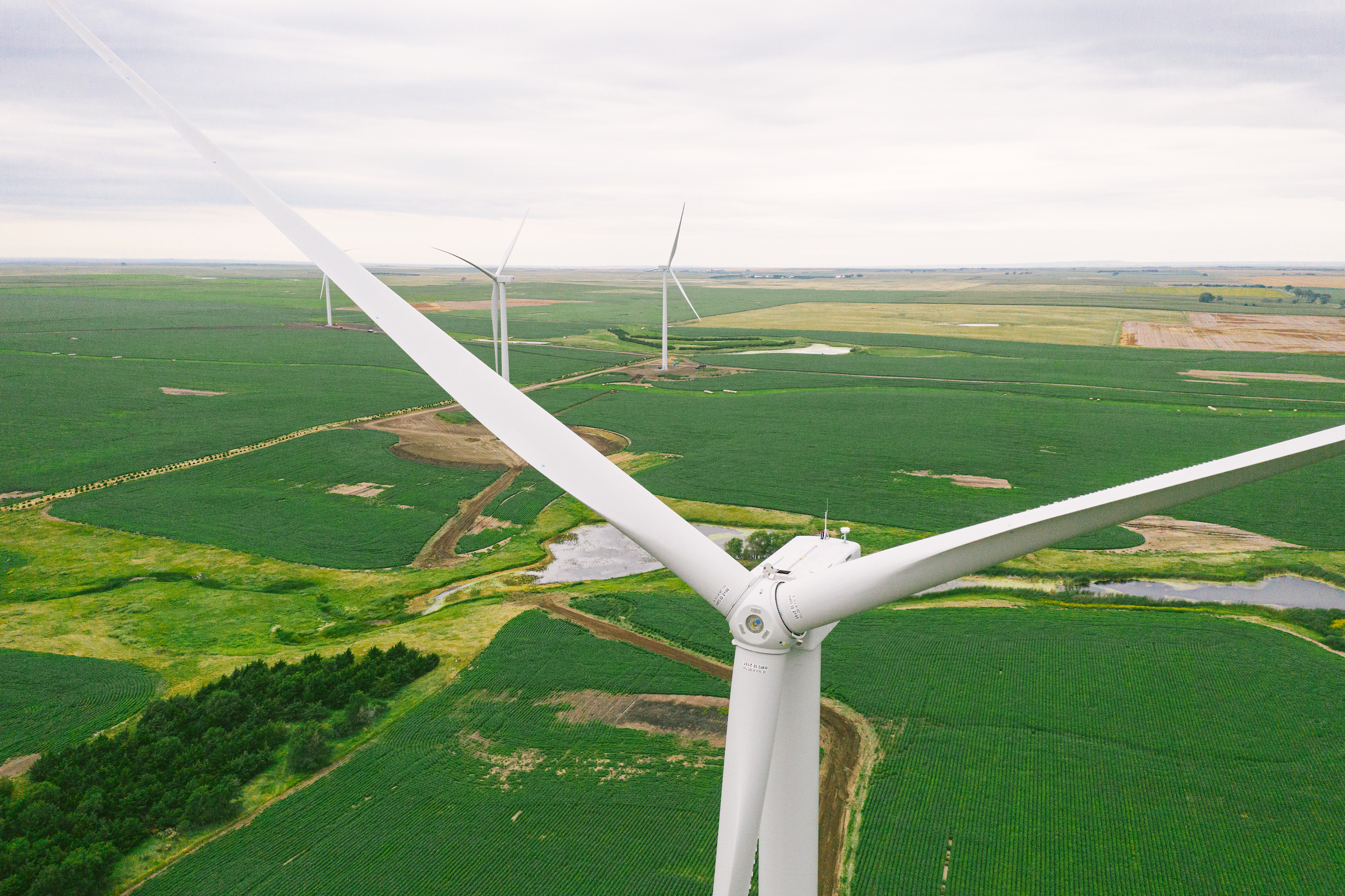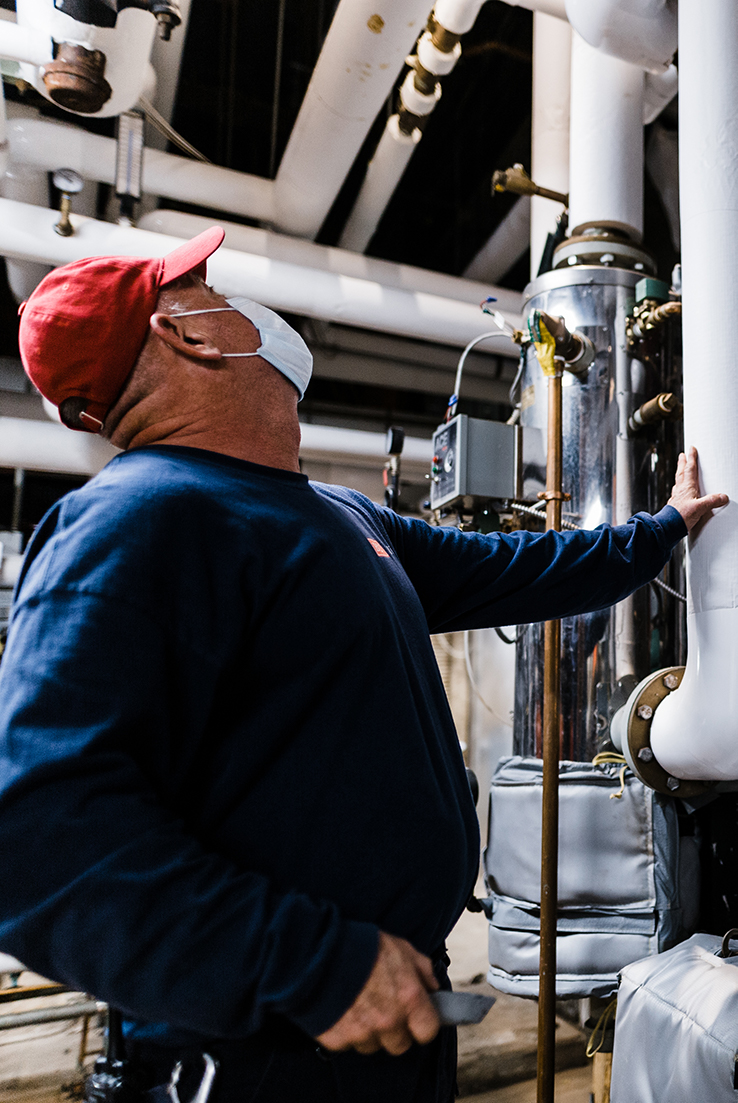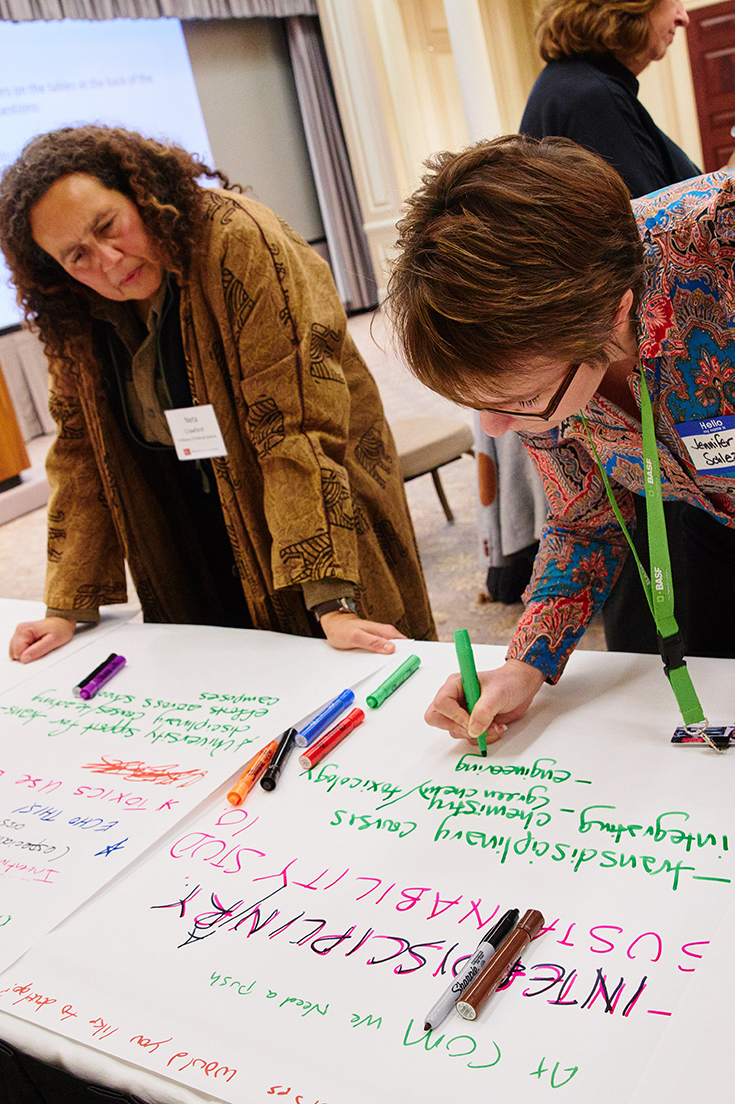Project Details
Location: South Dakota
Annual Energy: 205,000 MWh of wind energy
BU purchases electricity from 48.6 MW of wind generation capacity annually through a 20-year Power Purchase Agreement (PPA) with ENGIE North America.
The University will receive and retire the associated 205,000 Green-e Certified Renewable Energy Certificates (RECs) to claim credit for the emissions reductions from the wind farm. The PPA makes available new renewable energy to the grid. BU selected an unbuilt wind farm where our participation would enable its construction, a critical criterion called “additionality."
Why South Dakota?
This project is located in an electrical grid where BU can displace more fossil-fuel intense electricity production.
Out of 127 wind and solar project proposals received from across the country, BU chose a project with the greatest impact on global emissions. This new South Dakota wind farm will realize 2–3 times greater avoided emissions than a project in New England due to the larger percentage of green power already in the ISO-New England electrical grid.
Read on to learn about the project selection process.
Project Team
- Edison Energy: An energy management firm that Fortune 1000 companies, universities, and municipalities use to source clean power for their power portfolios
- Phoenix Energy: Independent energy purchasing consulting firm
- Foley Hoag LLP: Legal counsel providing renewable energy contract negotiations support
- ENGIE North America: Manages a range of energy businesses in the US and Canada, including renewable energy generation, retail energy sales, and energy optimization services for commercial, industrial, and residential customers. ENGIE has a large portfolio of wind, solar, and storage projects in North America.
Project Selection Process
The University Climate Action Plan Task Force’s PPA recommendation developed eight important criteria to be met:
- New renewable energy
- Renewable Energy Certificates (RECs)
- Green-e Certification of the RECs
- Project Developer Financial Strength
- Project Economics
- Global Emissions Impact (CO2e lb/MWh)
- Education & Research Opportunities
- Environmental & Health Cobenefits
Using these criteria, Edison Energy, BU's renewable energy purchasing consultant, identified projects in four different regions of the country.
New Renewable Energy
While renewable energy claims can and are accurately made by organizations who hold RECs, it was important to the task force to ensure the University was making a more tangible impact to reduce greenhouse gas emissions. A key way to achieve this was by enabling new renewable energy that would not otherwise have been generated if not for BU’s long-term agreement to purchase power from the project. This is called “additionality.”
- Additionality is a concept borrowed from the carbon offset market for organizations wanting to have more impact than simply buying RECs would provide for them. Renewable energy project developers fund project from various sources, including obtaining bank financing.
- BU’s investment grade credit rating is attractive to banks interested in financing renewable energy projects. With BU’s credit rating and commitment to purchase 205,000 MWh of electricity a year at a defined price for 15 years guaranteed the predictable cashflow necessary for the project developer to obtain the necessary bank financing. Once BU signed the PPA contract, ENGIE lined up the financing to enable them to proceed with the project.
Renewable Energy Certificates (RECs)
RECs provide the legal mechanism for buyers to make the claim they are purchasing renewable energy.
- RECs are the only way to represent ownership of energy that has been produced by renewable energy, even if it is not being directly used by the buyer of the electricity.
- A single REC represents one MWh of renewable energy that has been produced and delivered to the grid.
- The task force criteria included that the RECs come from the PPA project the University is participating in.
Green-e Certification of the RECs
To ensure the University’s claims of emissions reductions are credible, the task force required the RECs be third-party verified through the Green-e certification process. Therefore, the project receives Green-e Certified RECs to validate the claims for the emissions reductions.
Green-e is a program of the Center for Resource Solutions, a nonprofit that advances sustainable energy. Third-party certifications such as those conducted by Green-e are also required for other certification programs, including LEED green building certification.
Project Developer Financial Strength
One important criterion was for the University to participate in a project poised to begin, yet in need of financing to start construction. Thus, the financial strength of the wind project developer was critical to minimize the University’s risk of participating in a project that wouldn’t get built.
Project Economics (strong NPV/MWh)
With a long-term commitment, the economics of the project needed to be strong with respect to the market price of electricity and limit the risk of the marginal price escalating over the 15-year term. Considerable effort was expended by the energy procurement team to analyze and limit the financial risk to the University.
Global Emissions Impact (CO2e lb/MWh)
A priority of the Climate Action Plan is to leverage the plan for greater global benefit. This criterion, equally weighted with Project Economics, was to select the project with the greatest potential to avoid the production of greenhouse gases related to the University’s electricity demand.
BU Sustainability worked with the renewable energy supply team and researchers from Carnegie Mellon University to find a project that best aligned the timing of the wind energy generation with the more carbon intense (marginal) emissions on the grid.
Education & Research Opportunities
The task force recommended that the PPA provide opportunities for faculty to conduct research and for students to learn from the project and the developer.
- BU students and faculty benefit from the PPA through an annual wind farm tour, wind energy expert lectures, and support to participate in a wind turbine factory tour.
- Real-time data and monthly avoided emissions data will present research, education, and collaboration opportunities.
- Students have the opportunity to apply for two paid summer internships annually. Visit Handshake to learn more.
Environmental & Health Cobenefits
All construction projects have environmental impacts. The task force criteria favors projects with lower environmental and health impacts, during both construction and regular operation.
- The project completed the most advanced environmental assessment available based on the US Fish and Wildlife Service’s guidelines.
- The project developer is a long-time member of the American Wind Wildlife Institute (AWWI) whose mission is to facilitate timely and responsible development of wind energy while protecting wildlife and habitat.
BU is pleased to be an EPA Green Power Partner.









